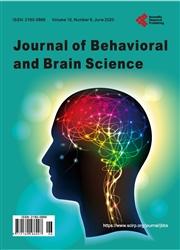Deeper inside the Experience of Pediatric Headache: A Narrative Study
引用次数: 2
Abstract
Objective: To explore meanings, perspectives and points of view of the subjective experience of paediatric patients with headache (PPwH) and create a first-person narrative for clinical practice. Methods: We conducted a qualitative, narrative research study with PPwH, 11 - 17 years old. Data were collected through narratives interviews and a twofold narrative analysis was performed: a narrative and a thematic analysis. Results: Twenty-three patients (14 girls; mean age 14.5; median duration of illness of 5.8 years) were recruited. Through narrative analysis and close reading, narratives revealed different ways to organize illness experience: PPwH can use 1) narrative sequences of recurrent events in order a) to describe the continuing living-through of the experience of headache, b) to define operative script or c) to characterize the illness experience generally as a “controlled” routine; or 2) a storied account of events, with well-defined characters, plot and evaluation of contingency and correlation between events to express a personal point of view and a moral standpoint about the illness experience. Through thematic analysis 5 main themes and 22 subthemes about the significance of being a PPwH emerged: a) disease dimension (description of pain), b) illness dimension, c) sickness, d) causality, e) coping and f) future perception. Then, a first-person narrative story was created as a tool enabling reflection and conversation during clinical consultation. Conclusions: Results suggest that promoting narrative dialogue can be an opportunity for the neurologist: the prototypical narrative developed from story analysis might be a tool to apply for the narrative-based medicine in the clinical setting.儿童头痛体验的更深层次:一项叙事研究
目的:探讨小儿头痛(PPwH)患者主观体验的意义、视角和观点,为临床实践创造第一人称叙述。方法:对11 ~ 17岁的PPwH进行定性、叙述性研究。通过叙事访谈收集数据,并进行双重叙事分析:叙事分析和主题分析。结果:23例患者(女孩14例;平均年龄14.5岁;中位病程为5.8年)。通过叙事分析和细读,叙事揭示了不同的疾病体验组织方式:PPwH可以使用1)反复发生事件的叙事顺序,a)描述头痛体验的持续经历,b)定义手术脚本,或c)将疾病体验描述为“受控”的常规;或者2)对事件的故事叙述,具有明确的人物,情节和对偶然性的评估以及事件之间的相关性,以表达对疾病经历的个人观点和道德立场。通过主题分析,出现了关于PPwH重要性的5个主题和22个副主题:a)疾病维度(疼痛描述),b)疾病维度,c)疾病,d)因果关系,e)应对和f)未来感知。然后,创建了一个第一人称叙事故事,作为在临床咨询期间进行反思和对话的工具。结论:结果表明,促进叙事性对话对神经科医生来说可能是一个机会:从故事分析中发展出来的原型叙事可能是临床环境中应用叙事性医学的工具。
本文章由计算机程序翻译,如有差异,请以英文原文为准。
求助全文
约1分钟内获得全文
求助全文

 求助内容:
求助内容: 应助结果提醒方式:
应助结果提醒方式:


